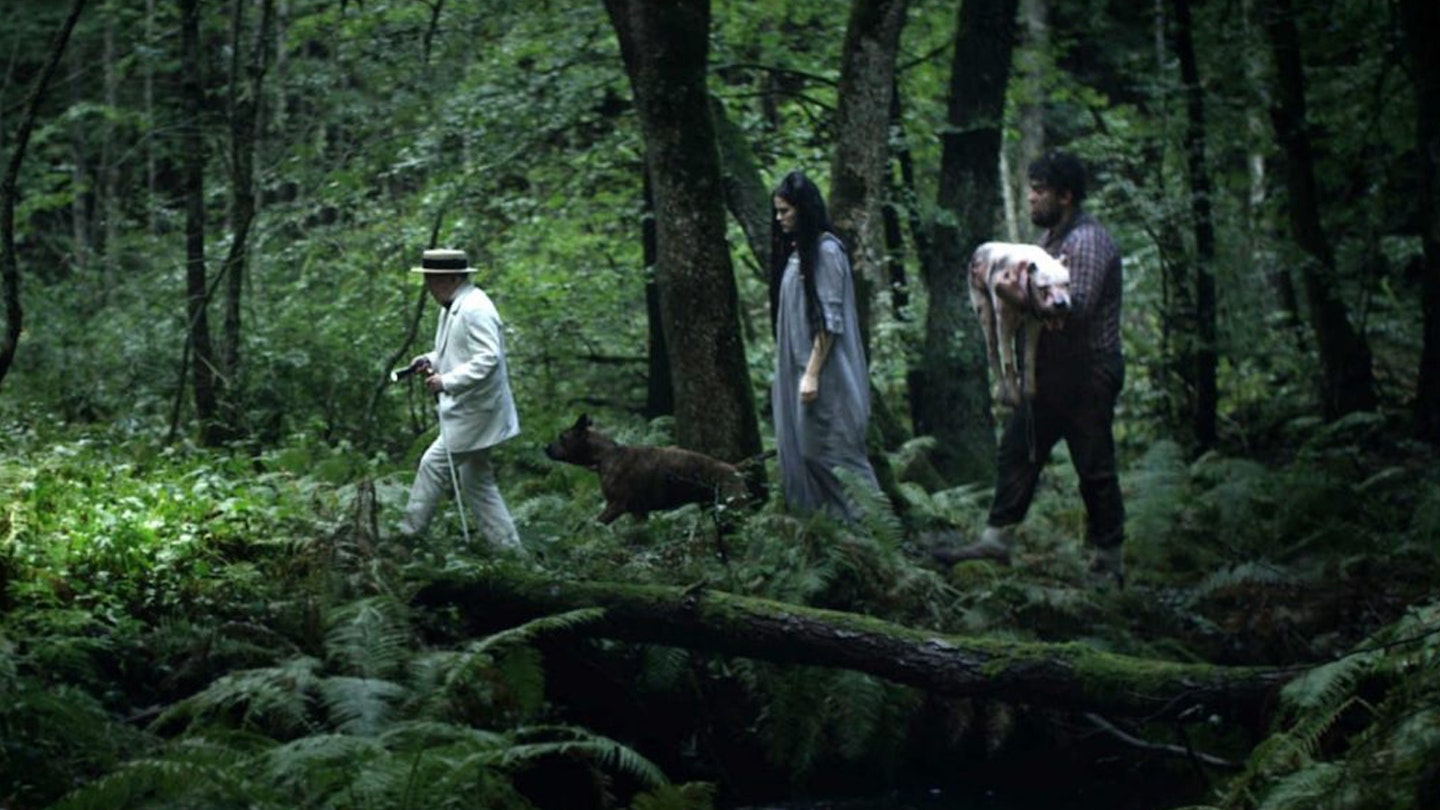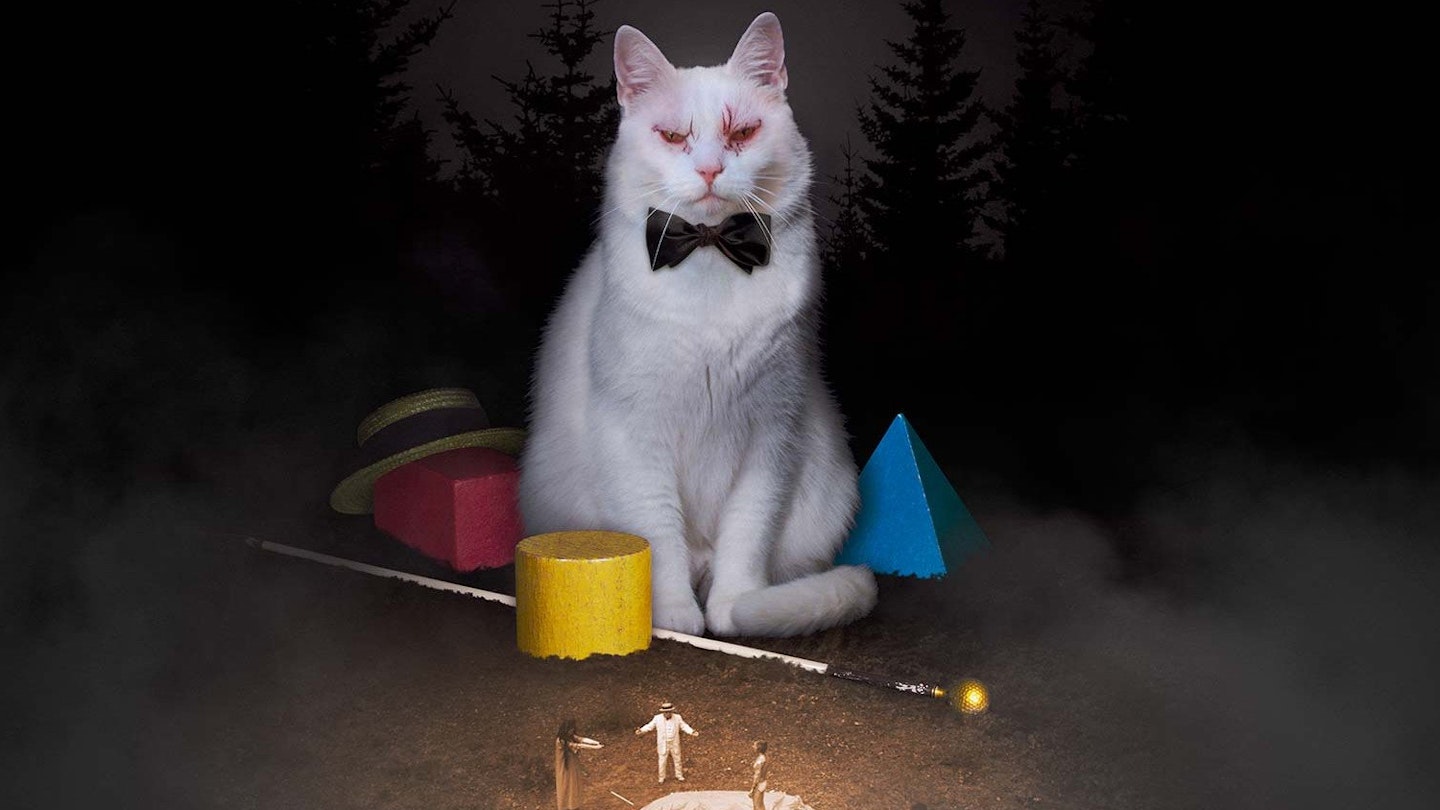There are plenty of film buff-y terms to help describe Koko-di Koko-da — “elevated horror”, “Groundhog Day meets Evil Dead”, “Lynchian nightmare” — but nothing does it as much justice as “batshit crazy”. Swedish writer-director Johannes Nyholm’s fable about the devastating nature of loss has the repetitive logic of a dream, the insistent simplicity of a nursery rhyme and the unsettling nature of Ari Aster. It’s a patience-tester — there will be walkouts — but if you slide into its grooves and give yourself over to its nutty intensity, it has searing hypnotic rewards.

Nyholm sets his weirdo stall out from the get-go. A trio — sideshow artist Mog (Peter Belli), statuesque Ed Wood extra Cherry (Brandy Litmanen) and hulking strongman Sampo (Morad Baloo Khatchadorian) — wend their way through a forest; Sampo carrying a dead dog, Mog singing the title song that is one of the most irritating earworms of the cinematic year. Things get a little bit saner when we cut to dad Tobias (Leif Edlund), mum Elin (Ylva Gallon) and daughter Maja (Katarina Jacobson) on holiday, sporting messily applied rabbit make-up and eating shellfish while clowns perform an unsettling floor show. Maja has an allergic reaction to her food and, in a powerfully constructed sequence, is found dead. Flash forward three years, and Tobias and Elin head for the woods for what should be a healing camping trip. Instead, they meet Mog, Cherry and Sampo, and the couple become trapped in a vicious time loop, killed over and over in different ways with no means of escape.
It isn’t a gruesome film but Nyholm implies dread and danger behind every tree.
Nyholm is a master of finding unease in unusual places, both through action — early on there is an unsettling row over the buying of ice cream — and image: the behemoth Sampo slow-dancing with the unconscious Elin, a dog lapping up urine, or the haunting appearance of a brilliant white cat. It isn’t a gruesome film but Nyholm implies dread and danger behind every tree. The sound design by Gustaf Berger and Jacques Pedersen is rich and textured — the buzzing of a mosquito outside a tent adds as much tension as Bernard Herrmann’s strings — and the repeated cycle is brilliantly orchestrated (a recurring aerial shot acts as a perfect punctuation point). Unlike Bill Murray in Groundhog Day or Domhnall Gleeson in About Time, the couple learn nothing. The circle is vicious and unending.
Interspersed throughout the film are hand-crafted shadow-puppet shows as a rabbit family play out Tobias and Elin’s heartbreak in a monochrome forest. In some ways, it provides a clearer amplification of the theme than the live action. The terrible troika are patently metaphors for the couple’s grief, but what Nyholm is saying about anguish or bereavement is diffuse. Perhaps the pair need to learn trust to survive in both a forest and in life. Or perhaps that they are fighting for their survival is enough.
